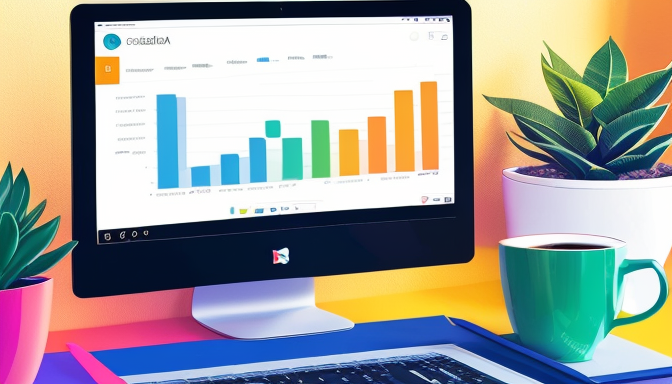Have you ever wondered what makes Joomla such a powerful tool for web development? Well, let’s dive into the structural elements that form the backbone of this dynamic platform. Joomla is not just a content management system; it’s a robust framework that empowers users to create stunning websites with ease. At its core, Joomla is built on a unique architecture that includes components, modules, plugins, and templates, all working together seamlessly.
First off, let’s talk about components. These are the heart of Joomla, handling the bulk of the functionality. Think of them as the engines of a car, driving your website’s features. Then we have modules, which are like the car’s accessories—adding that extra flair and functionality to your site. They can display various types of content, from menus to user login forms.
Next up are plugins. These little powerhouses enhance your site’s capabilities without altering the core code. They’re like the secret sauce that makes everything taste better! And let’s not forget about templates, which dictate the look and feel of your site. A well-designed template can transform your site from ordinary to extraordinary.
Finally, Joomla follows the MVC (Model-View-Controller) pattern, which separates the data (model), the user interface (view), and the logic (controller). This structure not only keeps your code organized but also makes it easier to maintain and scale. By understanding these components, you’re not just using Joomla; you’re mastering it, ready to elevate your website to new heights!
Getting Started with Joomla
Welcome to the exciting world of Joomla! If you’re looking to build a dynamic website, you’re in the right place. Joomla is not just a content management system; it’s a robust framework that offers flexibility and power. To kick things off, let’s dive into the essential structural elements of Joomla that make it a favorite among developers and website owners alike.
First up, we have components. Think of them as the heart of your Joomla site, responsible for the main functionality. Each component can be standalone, handling specific tasks like managing articles or user registrations. Next, we have modules, which are like the accessories that enhance your site’s appearance and functionality. They can display anything from menus to custom HTML content, giving you the freedom to design your layout.
Don’t forget about plugins, the silent heroes of Joomla! They extend the capabilities of both components and modules, adding features without altering the core system. Now, let’s talk about templates. These are the visual skins of your site, enabling you to change the look and feel with ease. A good template can transform your site from drab to fab in no time!
Lastly, Joomla employs the MVC pattern (Model-View-Controller), a design pattern that separates the data (model), user interface (view), and application logic (controller). This structure not only enhances performance but also makes it easier to maintain and scale your website. So, are you ready to unleash the full potential of Joomla? Let’s get started!

Advanced Features of Joomla
When it comes to building a website, Joomla offers a treasure trove of advanced features that can truly elevate your site. At the heart of Joomla’s architecture are its structural elements: components, modules, plugins, and templates. Understanding these components is like having a roadmap to navigate your website development journey.
Let’s break it down! Components are essentially the building blocks of your site. They handle the main functionality and are responsible for displaying content. Think of them as the engine of your car—without them, you’re not going anywhere! On the other hand, modules are like the accessories that enhance your car’s performance. They add extra features and functionalities, such as displaying a calendar or a list of articles.
Now, let’s not forget about plugins. These nifty little tools extend Joomla’s capabilities by adding specific features. For instance, a plugin can help with SEO optimization or social media integration. Lastly, templates are the visual aspect of your site, dictating how everything looks. They’re like the paint job on your car—important for first impressions!
One of the standout features of Joomla is its use of the MVC pattern (Model-View-Controller). This design pattern separates the application logic, user interface, and input control, making it easier to manage and scale your site. It’s like having an organized toolbox where everything has its place, allowing for efficient updates and maintenance.
In summary, by harnessing the advanced features of Joomla, you can create a website that is not only functional but also visually appealing and easy to manage. So, are you ready to dive into the world of Joomla and unleash its full potential?
Frequently Asked Questions
- What is Joomla?
Joomla is a powerful content management system (CMS) that allows you to build and manage websites with ease. It’s like having a toolbox filled with everything you need to create a stunning online presence without needing to be a coding wizard!
- How do I install Joomla?
Installing Joomla is straightforward! You just need to download the package from the official Joomla website, upload it to your server, and follow the installation wizard. Think of it as setting up a new app on your phone—just a few taps and you’re good to go!
- What are Joomla extensions?
Extensions are like apps for your Joomla site that add extra functionality. Whether you need a contact form, a gallery, or an SEO tool, there’s an extension for that! It’s like customizing your home with all the gadgets you love.
- Is Joomla secure?
Absolutely! Joomla has built-in security features and regular updates to keep your site safe. Just remember, keeping your extensions and templates updated is key to maintaining that security—like locking your doors and windows at night!